Abstract
In order to study the effect of antichlamydial antibodies in ocular secretions on resistance to ocular chlamydial infection and clearance of this infection, we have performed linked longitudinal studies in a Gambian village in which trachoma is endemic. We have measured IgG and IgA antibody levels to a local serotype B isolate of Chlamydia trachomatis by amplified enzyme immunoassay, and chlamydial antigen levels in conjunctival swabs using a commercially available immunoassay which detects chlamydial glycolipid. Having previously demonstrated that sharing a bedroom with a case of active trachoma is a risk factor for acquisition of the disease, we have analyzed the effect of IgG and IgA antibody on the acquisition and persistence of clinical trachoma after controlling for age, sex, exposure to infection and for the presence of chlamydial antigen using a Poisson regression model. We have found that the presence of antichlamydial IgG in ocular secretions of disease-free subjects is associated with an increased incidence of trachoma. IgA antibody shows an opposite trend, but this is not statistically significant. One possible explanation of these findings is that antichlamydial IgG antibodies enhance the infectivity of C. trachomatis for the human eye; this could have major implications for the development of a chlamydial vaccine.
Full text
PDF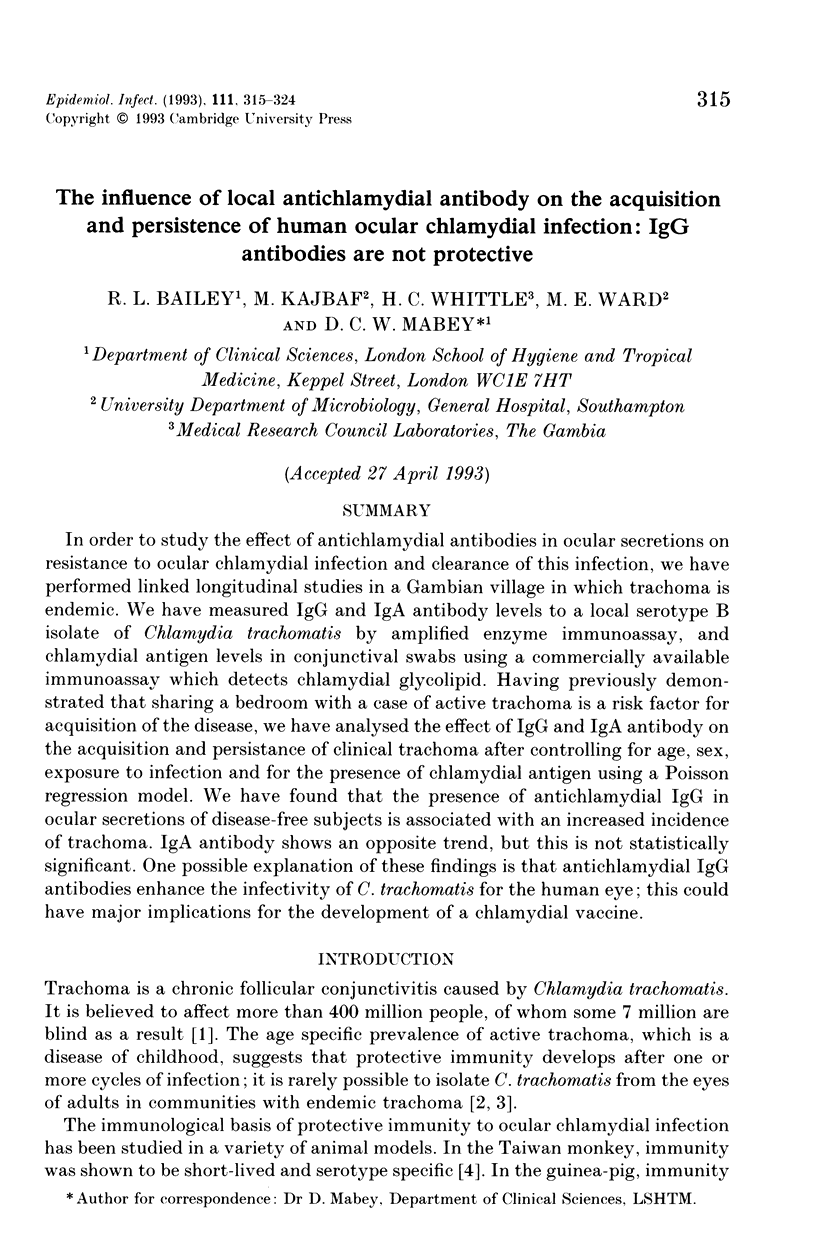
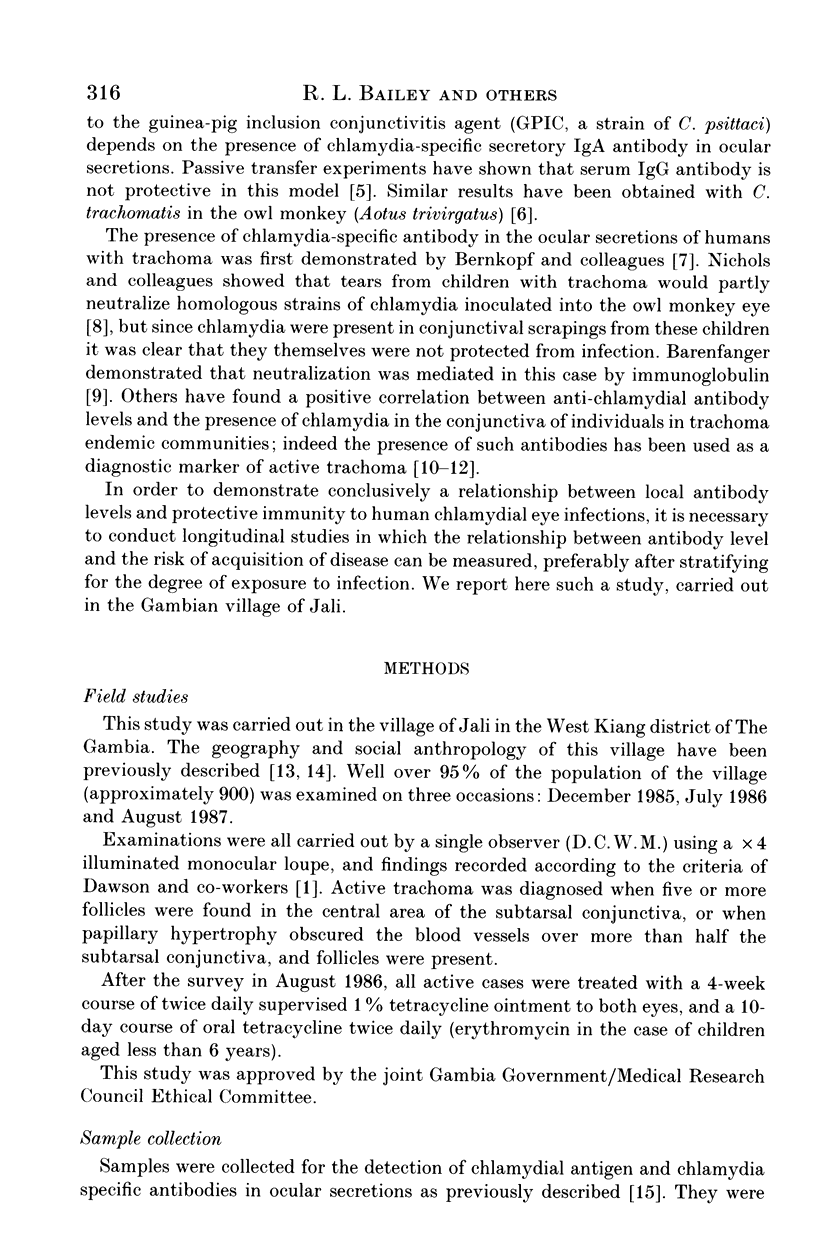
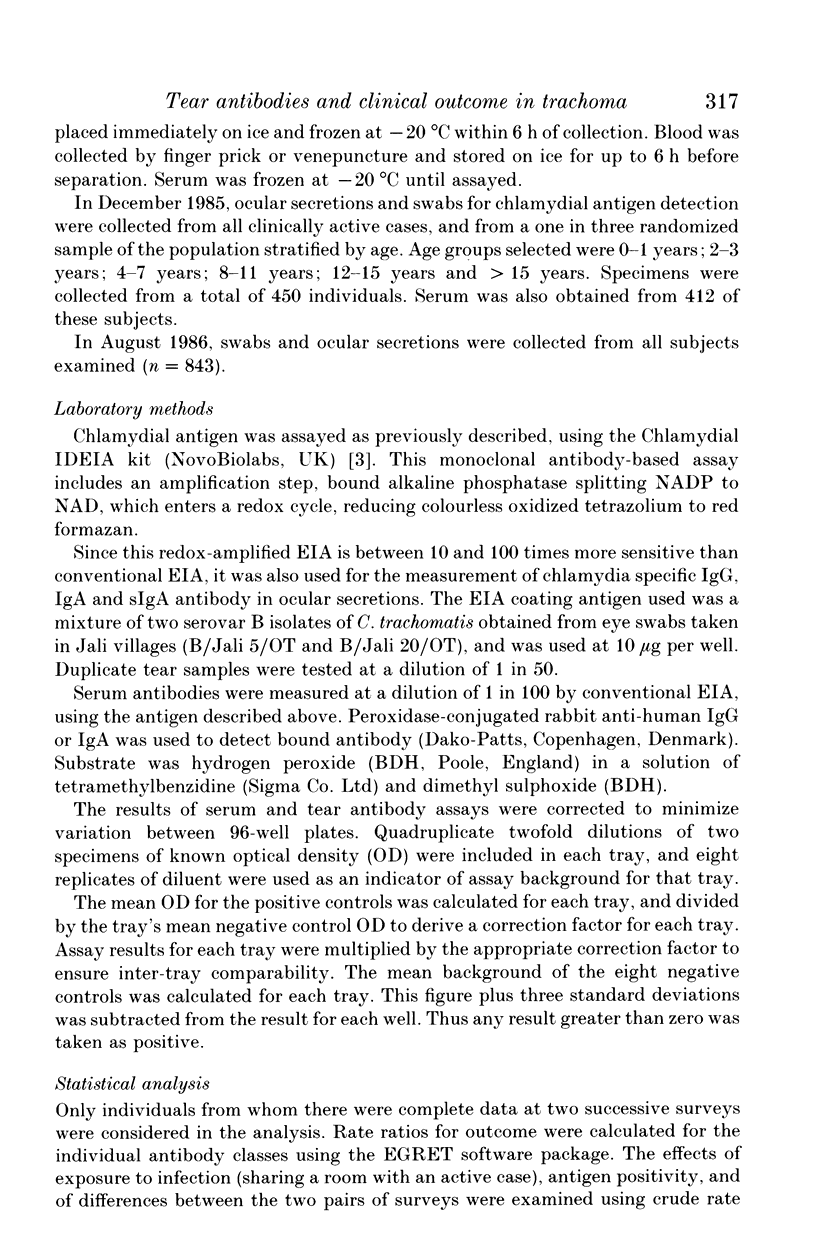
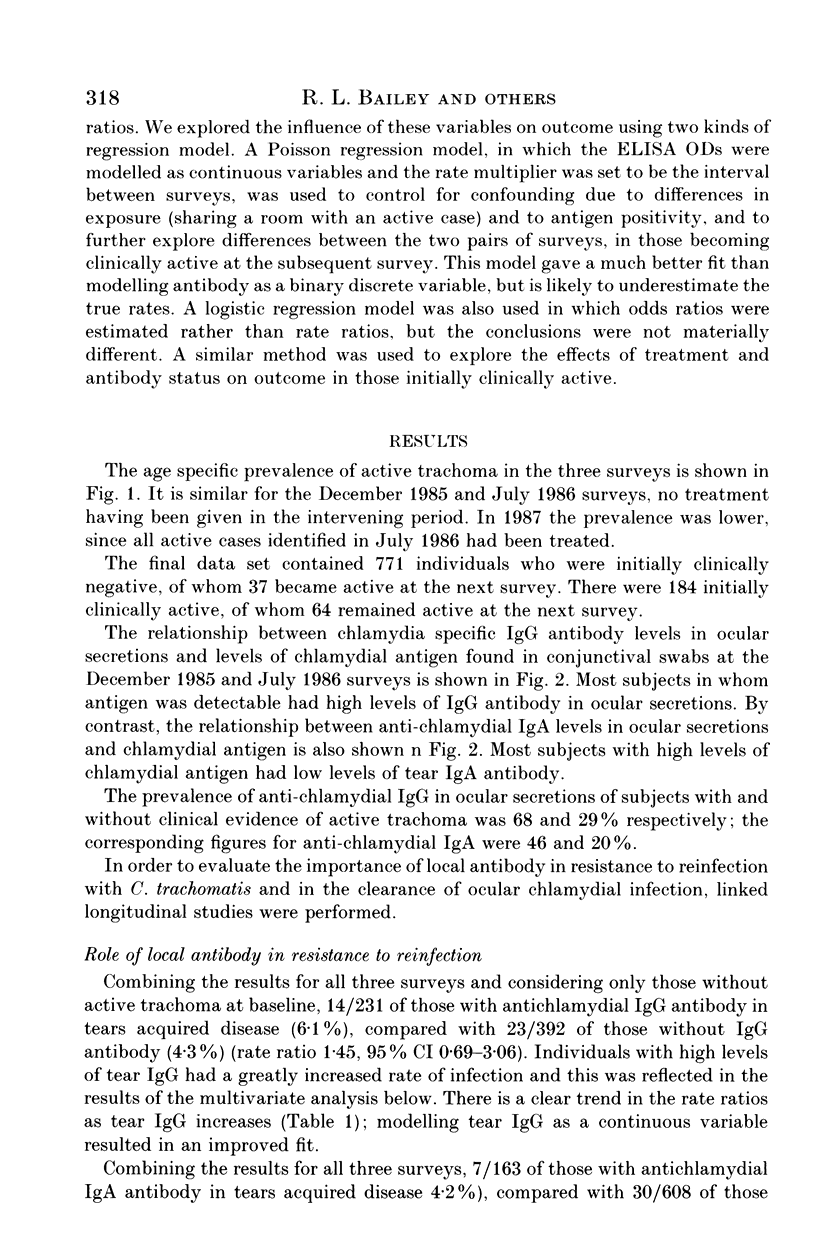
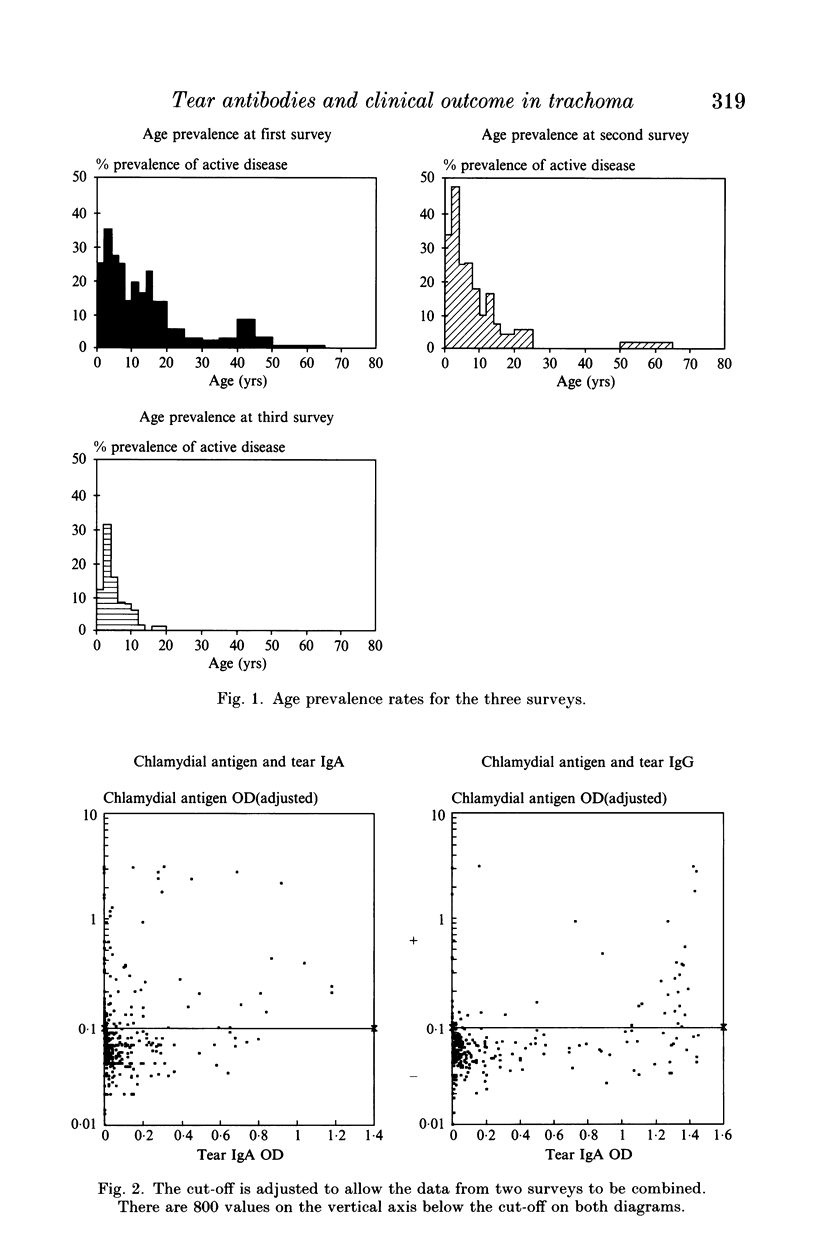
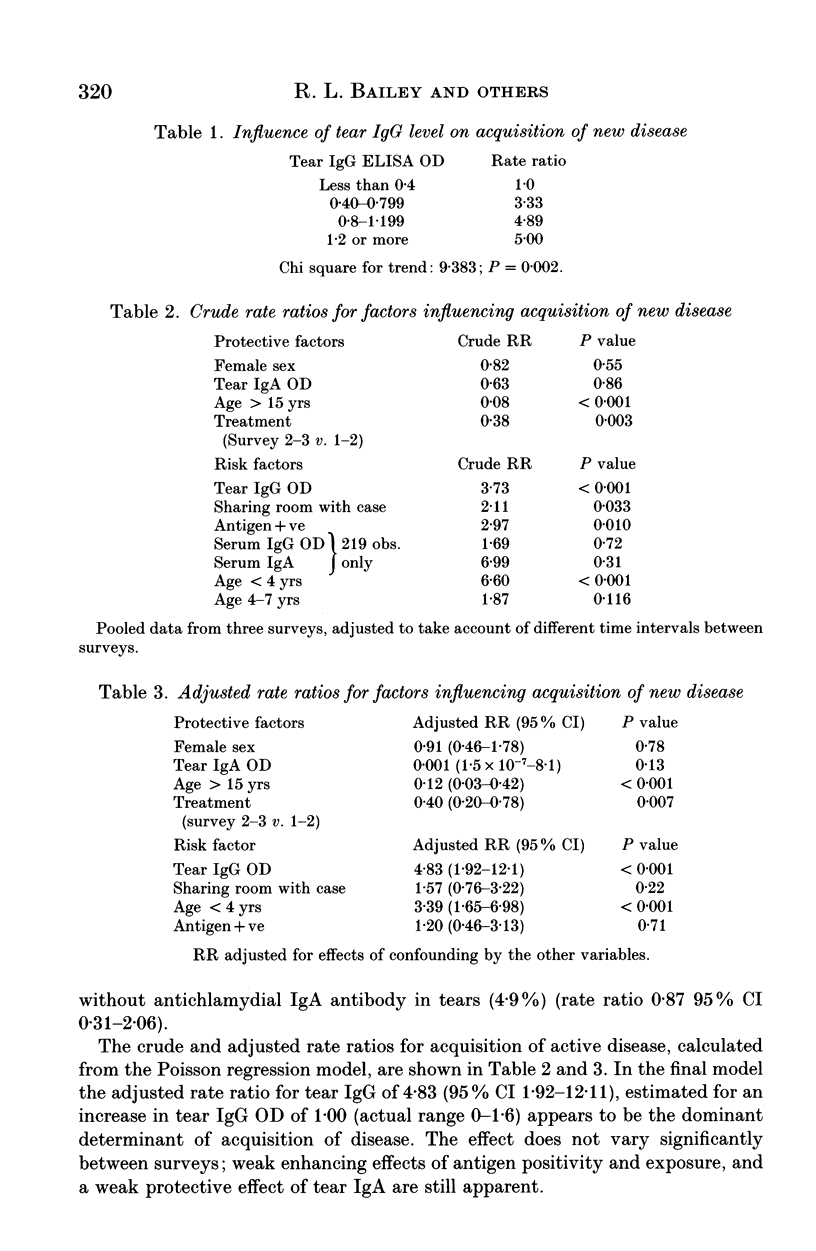
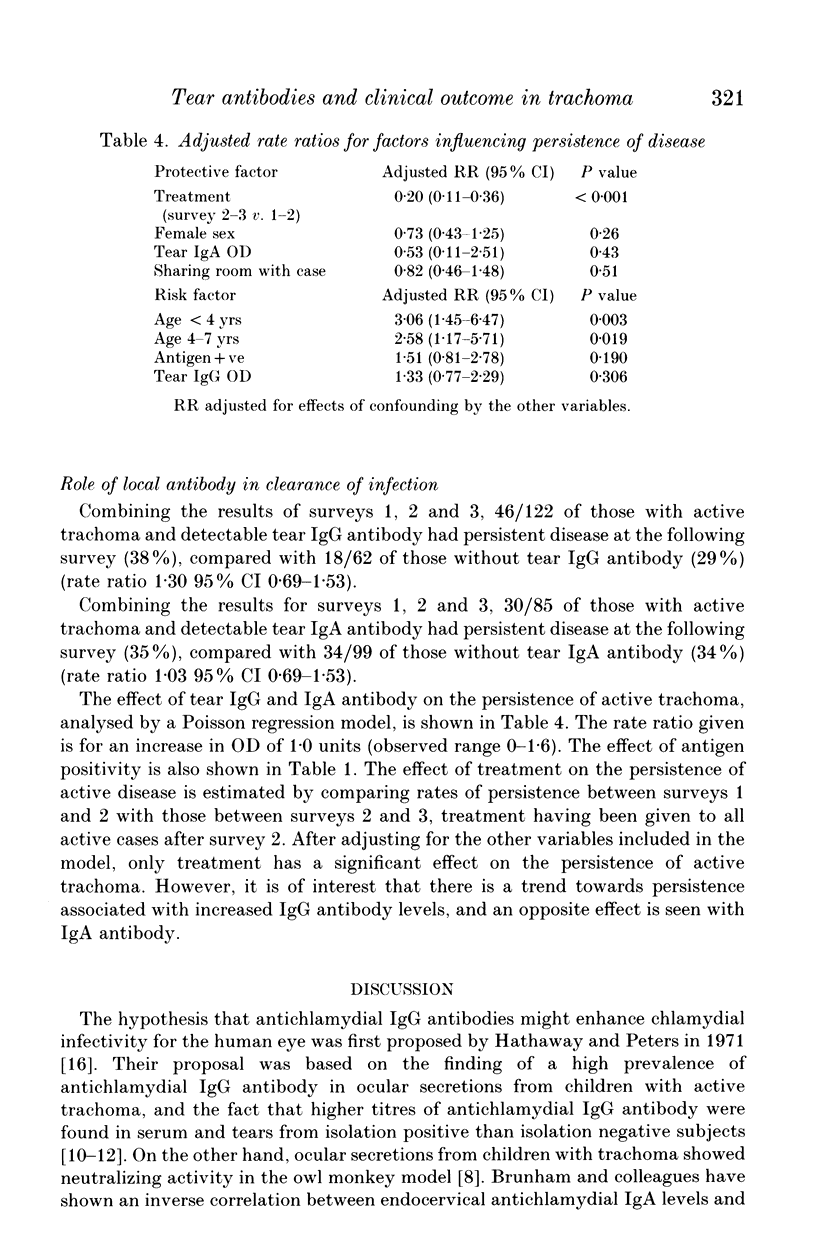
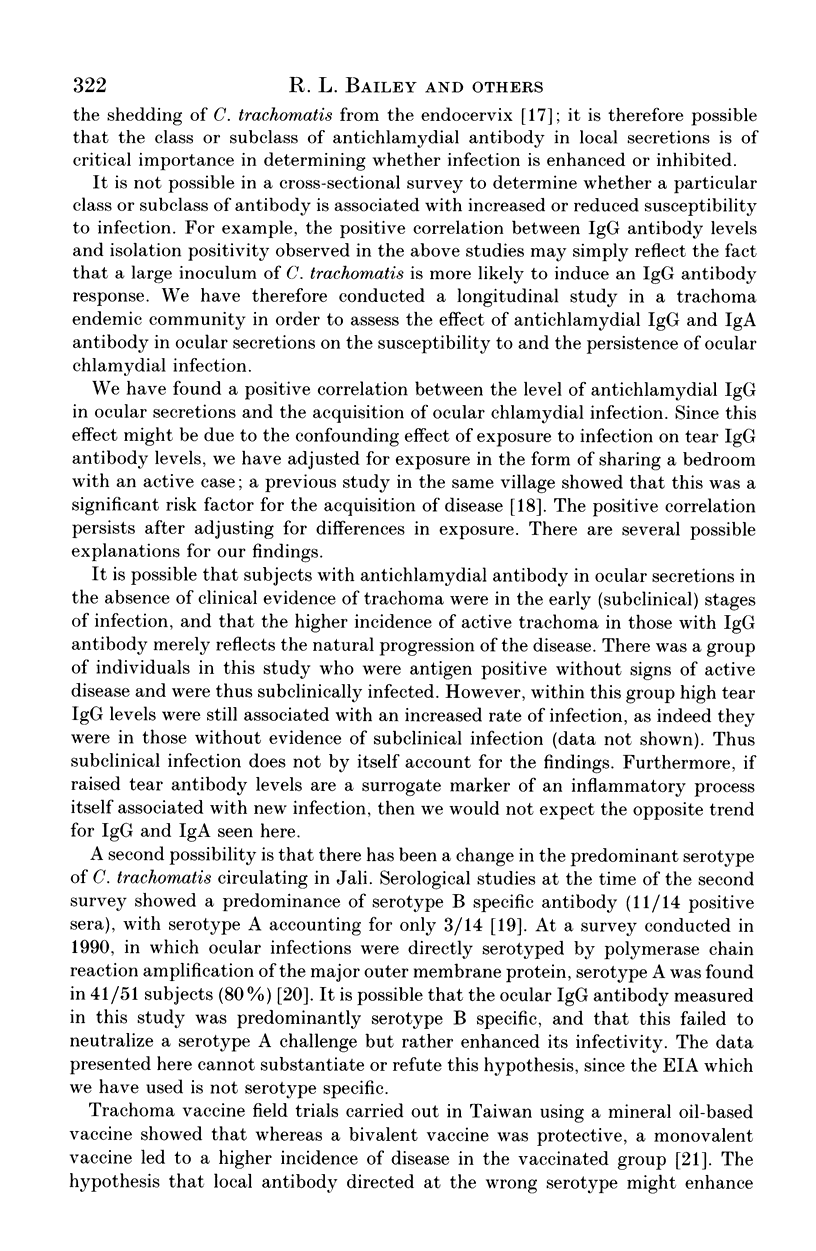
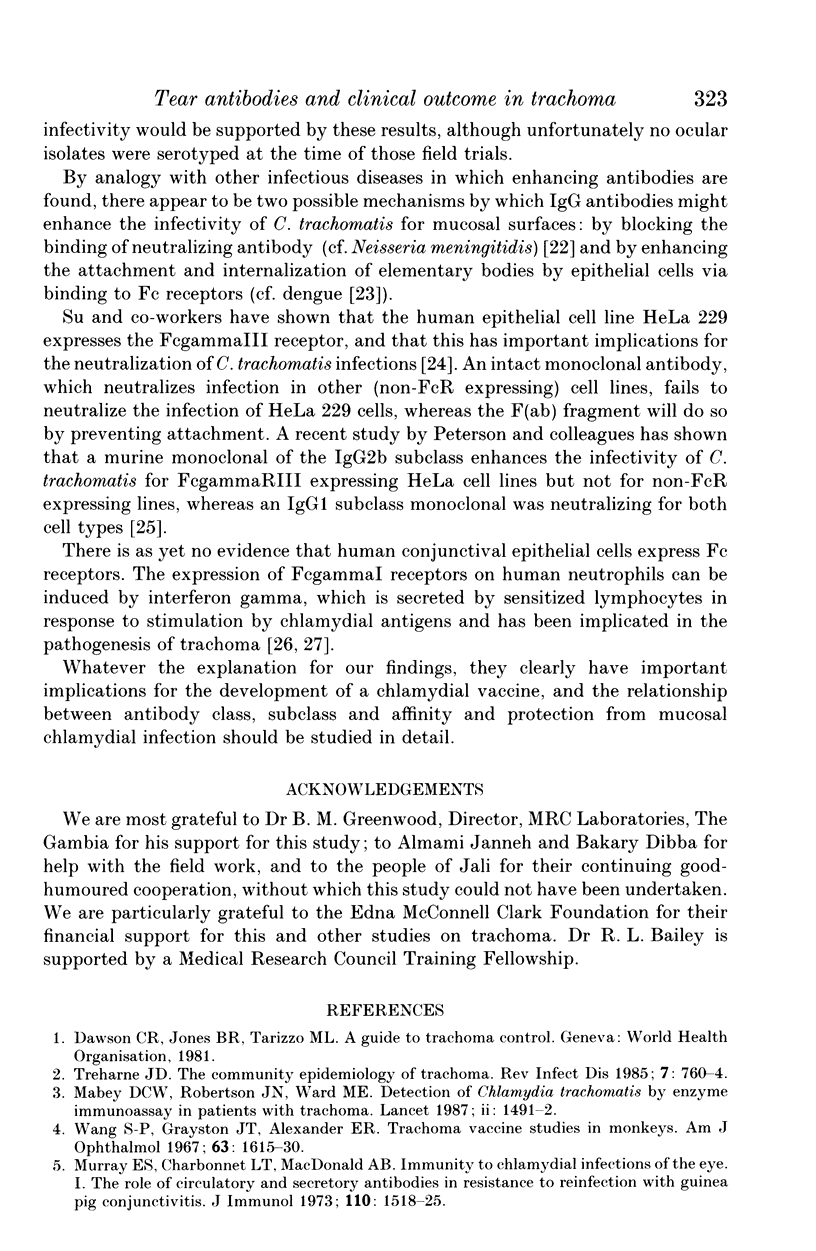
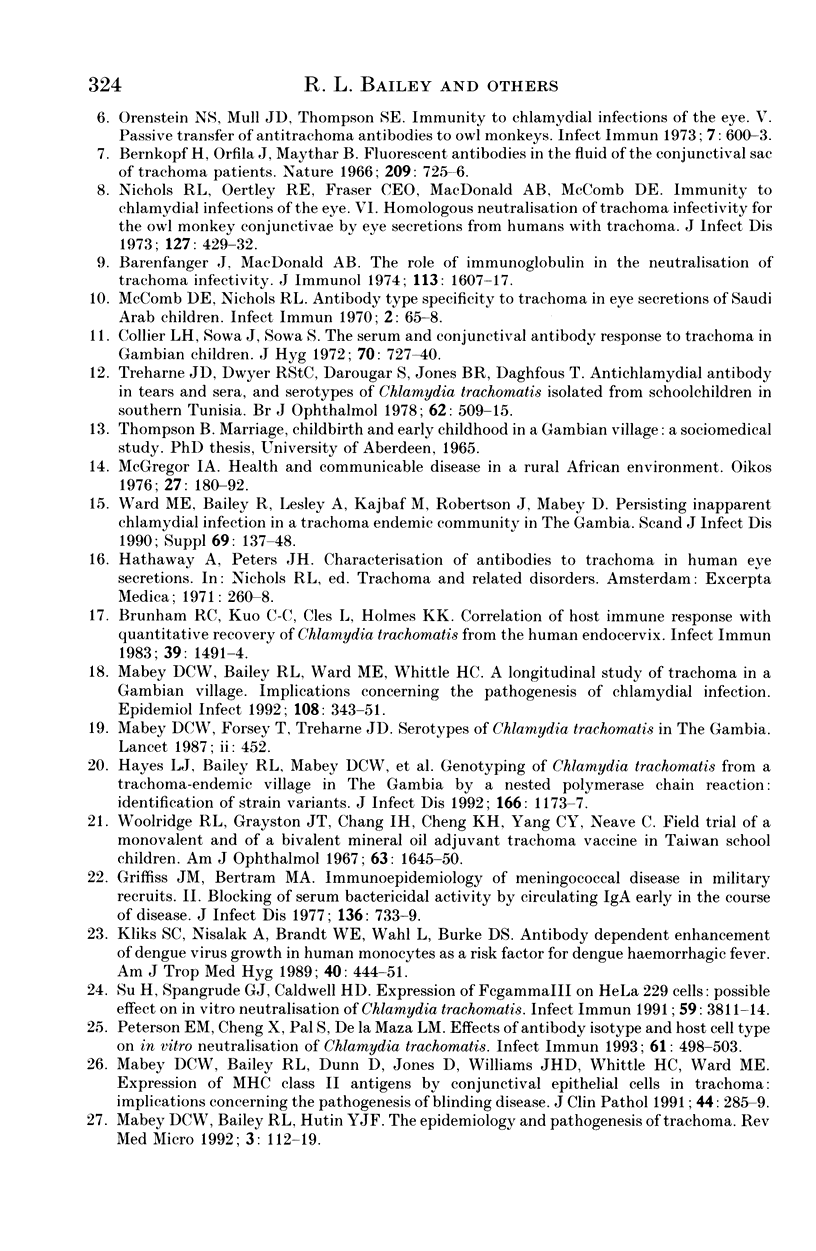
Selected References
These references are in PubMed. This may not be the complete list of references from this article.
- Barenfanger J., MacDonald A. B. The role of immunoglobulin in the neutralization of trachoma infectivity. J Immunol. 1974 Nov;113(5):1607–1617. [PubMed] [Google Scholar]
- Bernkopf H., Orfila J., Maythar B. Fluorescent antibodies in the fluid of the conjunctival sac of trachoma patients. Nature. 1966 Feb 12;209(5024):725–726. doi: 10.1038/209725a0. [DOI] [PubMed] [Google Scholar]
- Brunham R. C., Kuo C. C., Cles L., Holmes K. K. Correlation of host immune response with quantitative recovery of Chlamydia trachomatis from the human endocervix. Infect Immun. 1983 Mar;39(3):1491–1494. doi: 10.1128/iai.39.3.1491-1494.1983. [DOI] [PMC free article] [PubMed] [Google Scholar]
- Collier L. H., Sowa J., Sowa S. The serum and conjunctival antibody response to trachoma in Gambian children. J Hyg (Lond) 1972 Dec;70(4):727–740. doi: 10.1017/s0022172400022579. [DOI] [PMC free article] [PubMed] [Google Scholar]
- Griffiss J. M., Bertram M. A. Immunoepidemiology of meningococcal disease in military recruits. II. Blocking of serum bactericidal activity by circulating IgA early in the course of invasive disease. J Infect Dis. 1977 Dec;136(6):733–739. doi: 10.1093/infdis/136.6.733. [DOI] [PubMed] [Google Scholar]
- Hayes L. J., Bailey R. L., Mabey D. C., Clarke I. N., Pickett M. A., Watt P. J., Ward M. E. Genotyping of Chlamydia trachomatis from a trachoma-endemic village in the Gambia by a nested polymerase chain reaction: identification of strain variants. J Infect Dis. 1992 Nov;166(5):1173–1177. doi: 10.1093/infdis/166.5.1173. [DOI] [PubMed] [Google Scholar]
- Kliks S. C., Nisalak A., Brandt W. E., Wahl L., Burke D. S. Antibody-dependent enhancement of dengue virus growth in human monocytes as a risk factor for dengue hemorrhagic fever. Am J Trop Med Hyg. 1989 Apr;40(4):444–451. doi: 10.4269/ajtmh.1989.40.444. [DOI] [PubMed] [Google Scholar]
- Mabey D. C., Bailey R. L., Dunn D., Jones D., Williams J. H., Whittle H. C., Ward M. E. Expression of MHC class II antigens by conjunctival epithelial cells in trachoma: implications concerning the pathogenesis of blinding disease. J Clin Pathol. 1991 Apr;44(4):285–289. doi: 10.1136/jcp.44.4.285. [DOI] [PMC free article] [PubMed] [Google Scholar]
- Mabey D. C., Bailey R. L., Ward M. E., Whittle H. C. A longitudinal study of trachoma in a Gambian village: implications concerning the pathogenesis of chlamydial infection. Epidemiol Infect. 1992 Apr;108(2):343–351. doi: 10.1017/s0950268800049815. [DOI] [PMC free article] [PubMed] [Google Scholar]
- Mabey D. C., Forsey T., Treharne J. D. Serotypes of Chlamydia trachomatis in The Gambia. Lancet. 1987 Aug 22;2(8556):452–452. doi: 10.1016/s0140-6736(87)90984-6. [DOI] [PubMed] [Google Scholar]
- Mabey D. C., Robertson J. N., Ward M. E. Detection of Chlamydia trachomatis by enzyme immunoassay in patients with trachoma. Lancet. 1987 Dec 26;2(8574):1491–1492. doi: 10.1016/s0140-6736(87)92623-7. [DOI] [PubMed] [Google Scholar]
- McComb D. E., Nichols R. L. Antibody type specificity to trachoma in eye secretions of saudi arab children. Infect Immun. 1970 Jul;2(1):65–68. doi: 10.1128/iai.2.1.65-68.1970. [DOI] [PMC free article] [PubMed] [Google Scholar]
- Murray E. S., Charbonnet L. T., MacDonald A. B. Immunity to chlamydial infections of the eye. I. The role of circulatory and secretory antibodies in resistance to reinfection with guinea pig inclusion conjunctivitis. J Immunol. 1973 Jun;110(6):1518–1525. [PubMed] [Google Scholar]
- Nichols R. L., Oertley R. E., Fraser E. C., MacDonald A. B., McComb D. E. Immunity to chlamydial infections of the eye. VI. Homologous neutralization of trachoma infectivity for the owl monkey conjuctivae by eye secretions from humans with trachoma. J Infect Dis. 1973 Apr;127(4):429–432. doi: 10.1093/infdis/127.4.429. [DOI] [PubMed] [Google Scholar]
- Orenstein N. S., Mull J. D., Thompson S. E., 3rd Immunity to chlamydial infections of the eye. V. Passive transfer of antitrachoma antibodies to owl monkeys. Infect Immun. 1973 Apr;7(4):600–603. doi: 10.1128/iai.7.4.600-603.1973. [DOI] [PMC free article] [PubMed] [Google Scholar]
- Peterson E. M., Cheng X., Pal S., de la Maza L. M. Effects of antibody isotype and host cell type on in vitro neutralization of Chlamydia trachomatis. Infect Immun. 1993 Feb;61(2):498–503. doi: 10.1128/iai.61.2.498-503.1993. [DOI] [PMC free article] [PubMed] [Google Scholar]
- Su H., Spangrude G. J., Caldwell H. D. Expression of Fc gamma RIII on HeLa 229 cells: possible effect on in vitro neutralization of Chlamydia trachomatis. Infect Immun. 1991 Oct;59(10):3811–3814. doi: 10.1128/iai.59.10.3811-3814.1991. [DOI] [PMC free article] [PubMed] [Google Scholar]
- Treharne J. D., Dwyer R. S., Darougar S., Jones B. R., Daghfous T. Antichlamydial antibody in tears and sera, and serotypes of Chlamydia trachomatis isolated from schoolchildren in Southern Tunisia. Br J Ophthalmol. 1978 Aug;62(8):509–515. doi: 10.1136/bjo.62.8.509. [DOI] [PMC free article] [PubMed] [Google Scholar]
- Treharne J. D. The community epidemiology of trachoma. Rev Infect Dis. 1985 Nov-Dec;7(6):760–764. doi: 10.1093/clinids/7.6.760. [DOI] [PubMed] [Google Scholar]
- Wang S. P., Grayston J. T., Alexander E. R. Trachoma vaccine studies in monkeys. Am J Ophthalmol. 1967 May;63(5 Suppl):1615–1630. doi: 10.1016/0002-9394(67)94155-4. [DOI] [PubMed] [Google Scholar]
- Ward M., Bailey R., Lesley A., Kajbaf M., Robertson J., Mabey D. Persisting inapparent chlamydial infection in a trachoma endemic community in The Gambia. Scand J Infect Dis Suppl. 1990;69:137–148. [PubMed] [Google Scholar]
- Woolridge R. L., Grayston J. T., Chang I. H., Cheng K. H., Yang C. Y., Neave C. Field trial of a monovalent and of a bivalent mineral oil adjuvant trachoma vaccine in Taiwan school children. Am J Ophthalmol. 1967 May;63(5 Suppl):1645–1650. doi: 10.1016/0002-9394(67)94158-x. [DOI] [PubMed] [Google Scholar]


